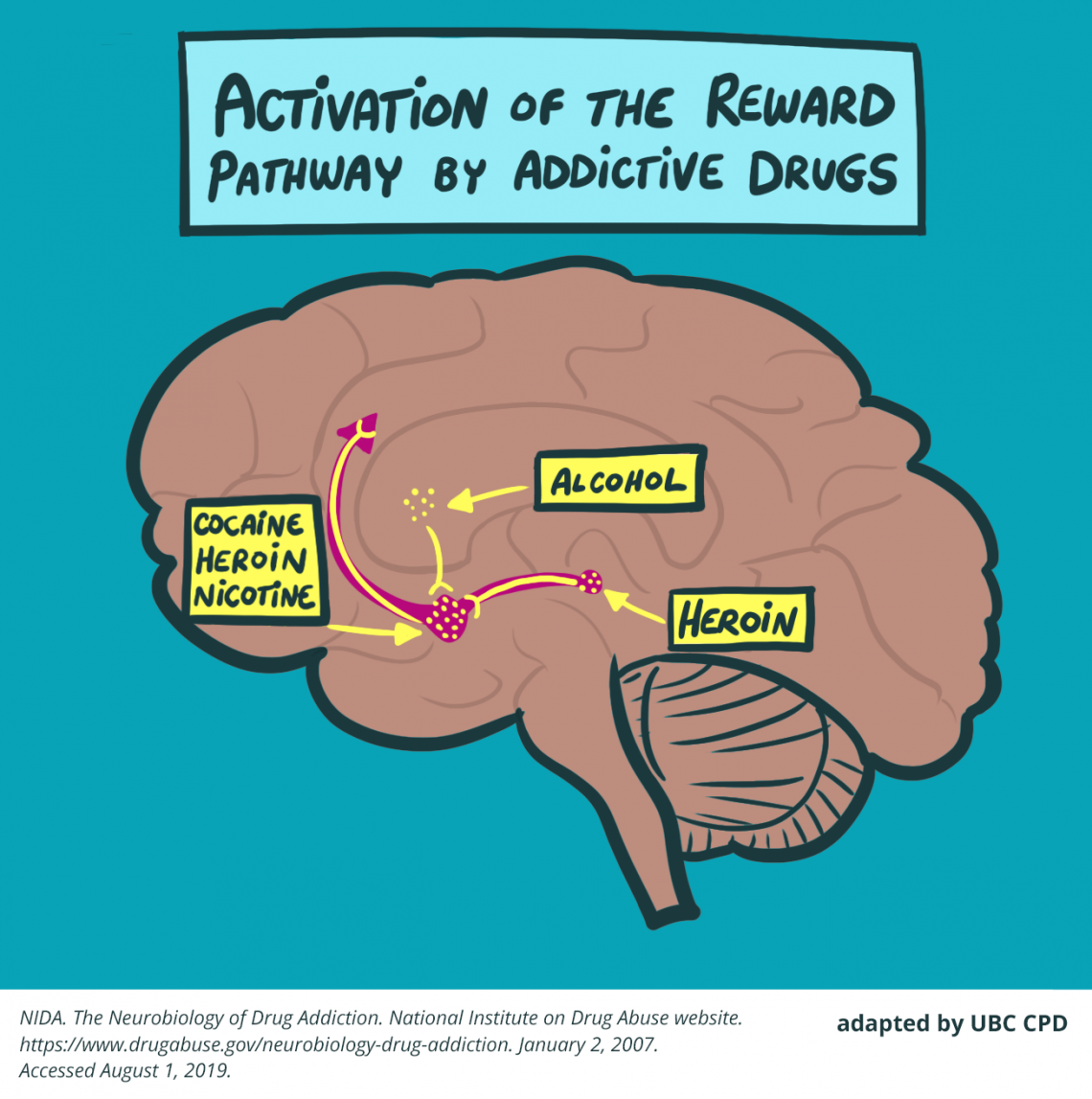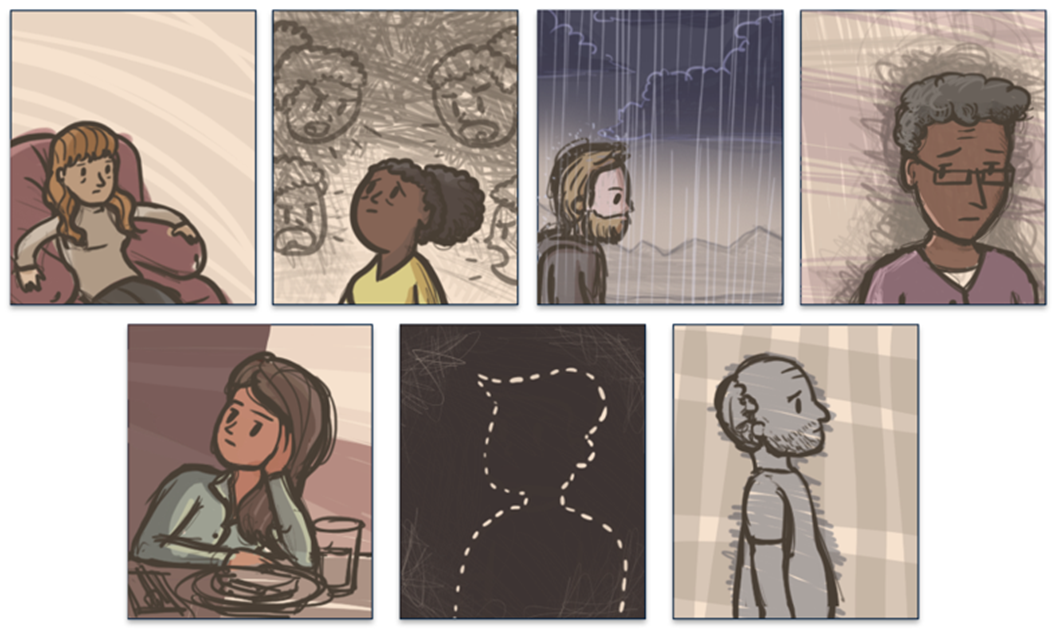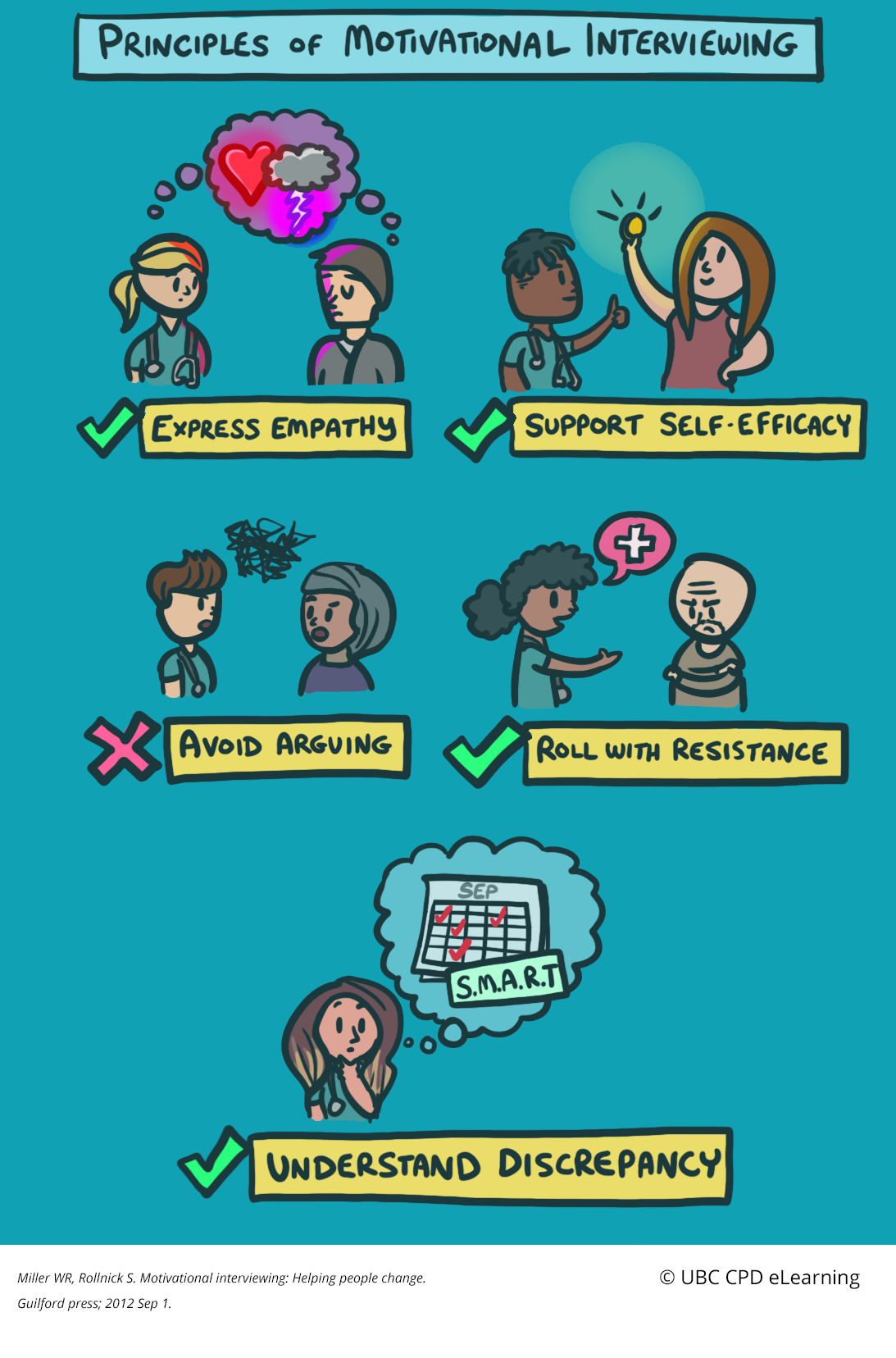We create education grounded in quality improvement and best practices for adult learning.

Case Study: Addiction Care in Cartoons

Course:
Addiction Care and Treatment Online Course
Background:
Our goal was to adapt a comprehensive course from the BCCSU on addiction care, covering 20+ modules on topics such as opioid use disorder, cannabis use disorder, harm reduction, and many more.
- The intended audience: family physicians, specialists, nurses, nurse practitioners, pharmacists, and other healthcare practitioners involved in addiction care and treatment.
Problems:
With our broad range of online learners, all of whom are receptive to different learning styles, it was important for us to establish a careful balance of didactic material with visual storytelling.
- The source material was dense in text but lacking imagery.
- It was possible to rely on stock photography, but it was deemed limited, as it can be emotionally inappropriate with the tone of the work. Additionally, medical stock photography is not accurate with the reality of addiction care.
- Real or on-site medical photography was also limited due to ethical constraints.

Approach:
- Focusing on the strength of our creative learning team, we developed a cartoon art style to fit the course.
- With iterative feedback from the course authors, we determined the categories of images that were needed for the medical content.
- Using personality, characterization, and symbolism, we created imagery to complement the scenarios, medical content and anecdotes presented in the course.
We also created some ground rules before approaching the art. These were the following:
- Avoid depictions of people using substances
- Focus on diversity and inclusivity when illustrating people
- Get feedback from content experts on rough drafts
- Focus on patient-centered perspectives

Denotative Imagery: diagrams, graphs and more literal representations of medical content.
Connotative Imagery: Abstract imagery and vignettes that rely on concepts like metaphors, exaggeration, and symbolism

Outcomes and lessons learned:
In developing this course, the marriage of cartoons and didactic content was a great exercise in leveraging the storytelling potential of medicine. Throughout ACTOC, a major focus was on the clinical tips from content experts and from addiction care practitioners. This showed us the inherent need for anecdotes and storytelling for addiction care and was a big motivator for using cartoons to add emotion and personality to an otherwise difficult subject to approach.
That said, the difficulties encountered in creating this course were also rooted in the subjectivity of cartoons. We were weary of adding to the stigma surrounding addiction care, or creating artwork that was disrespectful to practitioners, patients, or the subject as a whole.
Next steps:
Ultimately, the positive reception of this course validated the intent for innovating on educational imagery.
A future direction would be to focus more on patient-centered perspectives, and to get patient feedback on the course visuals. Patient stories would also be a welcome addition to the course.